Classic Gear: Korg Poly-800 – The affordable ‘80s poly
Korg's affordable vintage synthesizer was a hit with gigging musicians too!
The Korg Poly-800 is about as ‘80s as they come. Here’s how it broke the $1000 price barrier and became a runaway hit.
Korg Poly-800
It might be hard to believe in these days of affordable synths but there was a time when you couldn’t get a poly for less than $1000. Korg changed all that with its Poly-800, an eight-voice analogue synth that sold for an astonishing $800 in 1983. Consequently, Korg sold bucketloads of them. However, you don’t hear about the Poly-800 nearly as much as other synths from the time.
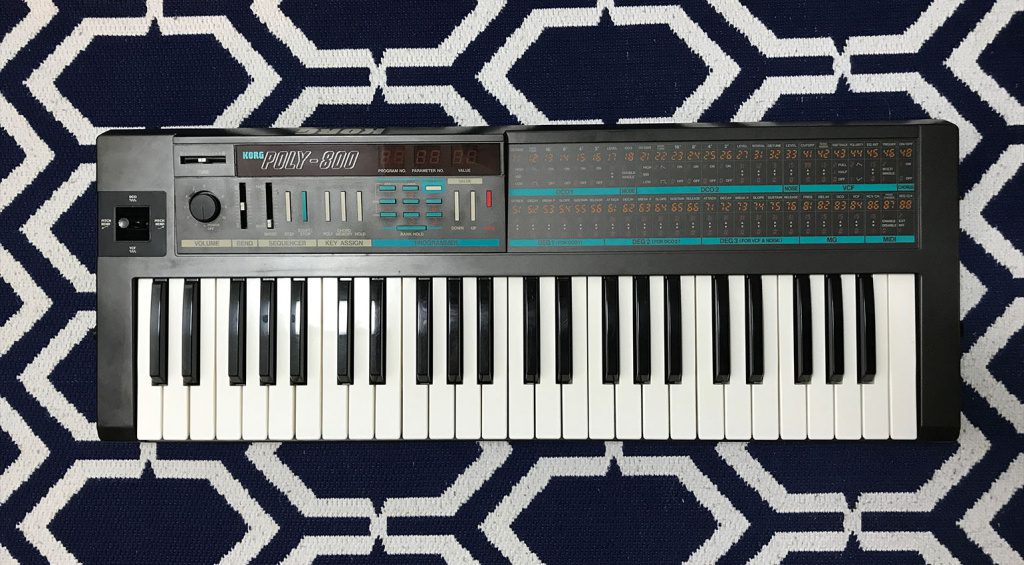
It’s time to change all that. Let’s take a deep dive into the Korg Poly-800, the unique chip at the heart of its synthesis architecture and how it primed the pump for today’s overflowing of cheap synths.
Poly Affordability
Korg’s first relatively affordable poly synth was the Polysix, a single VCO, six-voice keyboard released in 1981. They followed this up with underrated Poly-61, another six-voice, this time with two DCOs per. I’m a fan for the tone but the cost-cutting low resolution in the digital controls rubs some people the wrong way. The last in the series and the one to hit the sweet spot of price and voice count was the Poly-800.
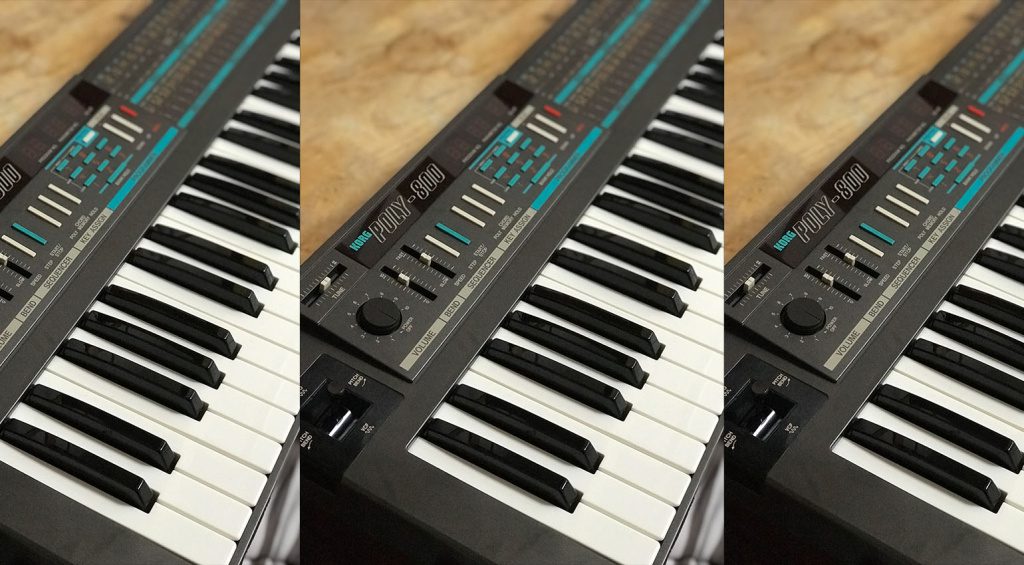
Although the goal was likely to get the price down as low as possible, the lightweight all-plastic case made it popular with gigging musicians. You could also run it off batteries, which made it portable. And, taking a page from the Yamaha CS01, it even had pegs on the side for guitar straps. There was no mod grip like on the Roland SH-101, but the point was made. Judging by the beat-up condition of many surviving Poly-800s, it’s clear that it was a favourite with touring bands.
Another way that Korg was able to keep the price low was by squeezing most of the synthesis onto a single chip. Curtis Electromusic Specialties had this same idea with its CEM3396, which came out the following year. Longtime Korg engineer Fumio Mieda made smart use of an Oki Electric MSM5232, which was used in video games as well as television broadcast systems. By squeezing the chip hard, he could get it to act as dual DCOs, envelopes and even a filter.
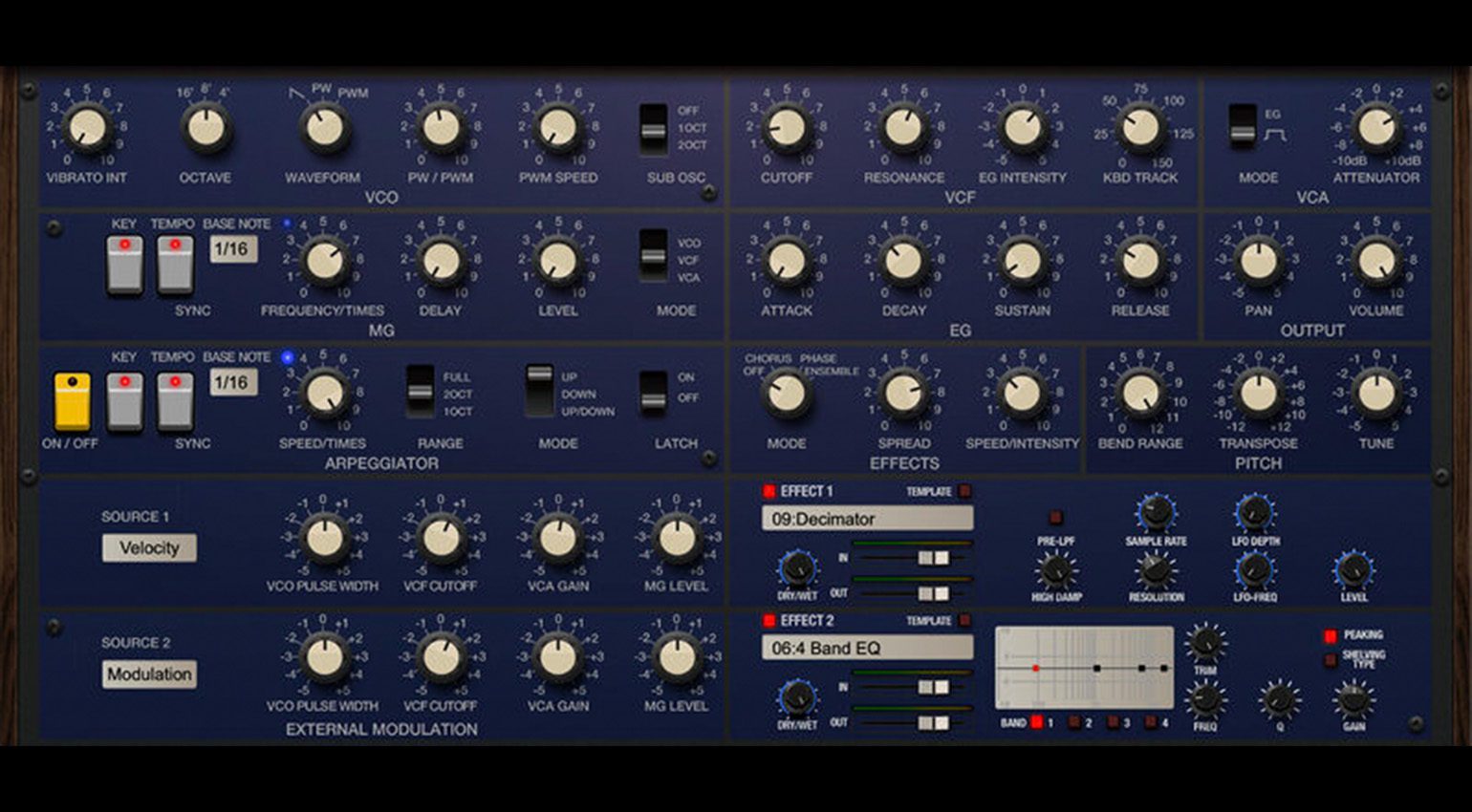
Poly Structure
The Korg Poly-800 had an unusual synthesis structure thanks to its reliance on the Oki MSM5232. Let’s break it down.
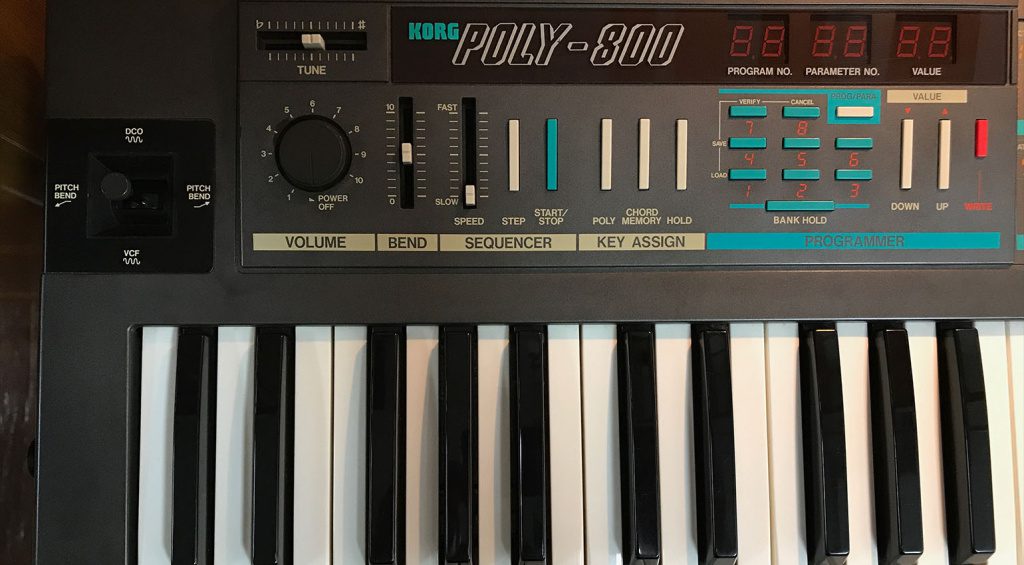
There were two DCOs, each capable of two waveforms: square and sawtooth. The sawtooth was actually a modified version of the square wave, which is unique among synthesizers. Some say the Poly-800 sounds like it’s always outputting square waves, even when its supposed to be a saw, but rather than focus on the negatives I like to think that’s it’s particularly good at square wave sounds, like basses and organs.
The next weird thing was, like an organ, it was additive. Rather than select the footage for each DCO, you could mix in varying amounts at 16’, 8’, 4’ and 2’. (This was not 100% unique, as Roland’s SH-7 had an additive oscillator as well.)
While the Poly-800 was capable of playing eight voices, this was actually only in single DCO mode. Using both DCOs at the same time reduced the voice count to four. While each DCO had its own envelope, there was only one filter, a 24dB/octave lowpass. Yes, the Poly-800 was paraphonic. Speaking of envelopes, they were actually ADBSSR envelopes: that’s Attack, Decay, Break, Slope, Sustain and Release. Pretty wild for 1983.
Other oddments included an analogue stereo chorus, a (rather clunky) step sequencer, a noise generator (which shared an envelope with the filter!), chord memory and MIDI, although no SysEx, sadly.
Expanding the Poly-800 Range
The Korg Poly-800 proved popular enough that Korg decided to expand its range. It offered a limited edition model with reverse colour keys as well as a desktop version, the EX-800 (which thankfully did have SysEx).
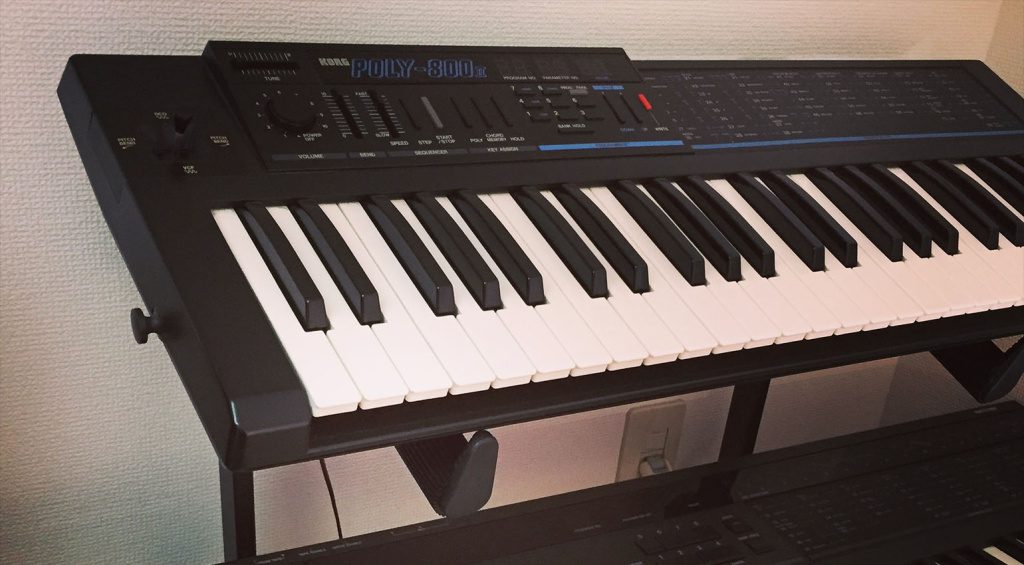
In 1985, Korg followed up the green and brown Poly-800 with the much more fetching blue and black Poly-800 MkII. Along with the new colour scheme (that brought it in line with the DW-8000), it also featured a digital delay instead of the analogue chorus and of course SysEx. For my money, this is the Poly-800 to get, as the delay is capable of some pretty wild pitch effects.
Mod Your Poly
Given the lack of hands-on control on the Poly-800, a number of mods have developed over the years for the Poly-800, EX-800 and 800 MkII. The most common one is the Moog Slayer Filter Mod, which adds two knobs for control over filter cutoff and resonance.
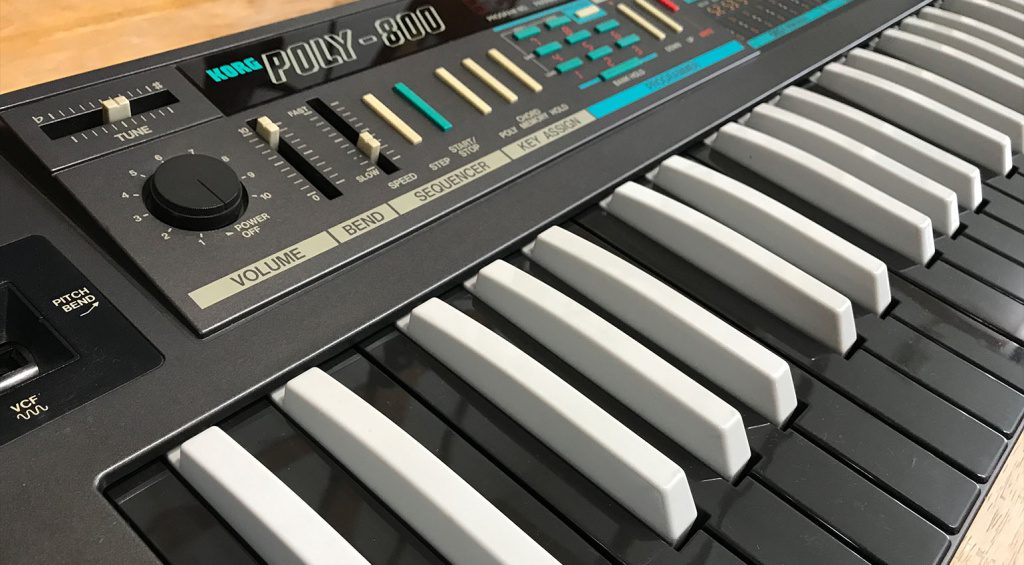
Other mods include a switch to toggle the filter between 24 and 12dB/oct (yes, there’s an unused 2-pole filter hiding in there), audio in to process external audio through the filter, FM modulation of the VCF, and SysEx for the original 800.
I did the Moog Slayer mod on my 800 and while fun, you have to be careful with the resonance as it can get punishingly extreme. (However “punishingly extreme” may be just what you want.)
A Very Poly Christmas
I have a very soft spot in my heart for the Korg Poly-800 as it was my first synth. I was tired of learning classical music; I wanted to play Prince songs. My parents were kind enough to get me a Poly-800 for Christmas in 1984 to help make my Dr Fink dreams come true.
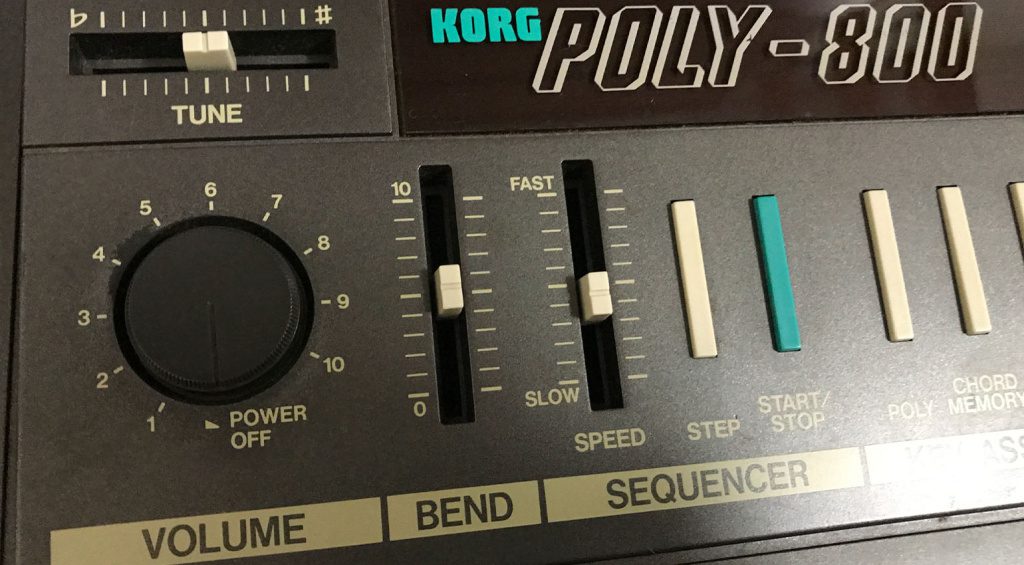
It’s funny to think that I taught myself synthesis on the Poly-800, given how weird the oscillator section is. Plus those odd envelopes! But learn I did.
I kept my 800 until around 1990 when I was fully onboard with sampling and EBM like Front 242 and Skinny Puppy. Had I known that Death In June were Poly-800 users, I might not have got rid of it.
I picked up my current one cheap about seven years ago. It was part of the first batch, meaning it didn’t have an internal battery – remove the D cells and you lose your saved patches. I put one in at the same time that I did the Slayer mod.
Reconsidering the Korg Poly-800
For a while it was popular to bad mouth the Poly-800 (Polyester-800, anyone?) seeing as it wasn’t a “real synth” like the Polysix or Juno-106. Thankfully that’s mostly finished, with people now willing to embrace it for what it is, rather than what it’s not. Sure, it’s quirky as hell but that’s all part of its charm.
I would also posit that the Poly-800 is the first “low-cost” synthesizer. Like the Volcas and Behringer Mini synths of today, the Poly-800 managed to squeeze quite a bit of instrument into an affordable package.
Get That Plastic Sound
If you’ve been wanting to add an 800 to your studio, a word of advice. There are lots of them around but oh so many got mistreated on the road, so give it the once over before you buy. Also, check the battery compartment. Too many have destroyed innards thanks to leaking, forgotten batteries.
No one has remade the Poly-800 – yet. It hasn’t even shown up in Korg’s software Legacy collection. The closest you can get is the neat (and free!) soft synth Fury-800 from Full Bucket Music.
If you’re after something in the spirit of the Poly-800, might I suggest a Korg Volca Keys or Behringer JT-4000 Micro? With their quirks and low price tags, they’re sure to be the Poly-800s of the future. And, although it’s not analogue, the MicroKorg is certainly in the cheap and cheerful spirit of the Poly-800.

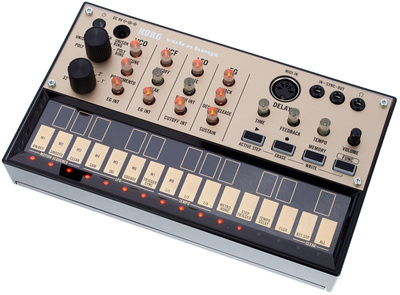

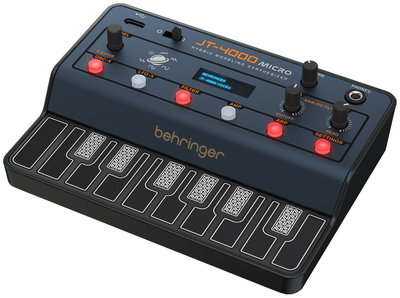

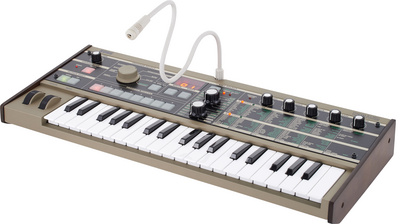
More Information
- Korg’s home page
- All about Korg
- All about synthesizers
8 responses to “Classic Gear: Korg Poly-800 – The affordable ‘80s poly”

 4,4 / 5,0 |
4,4 / 5,0 | 






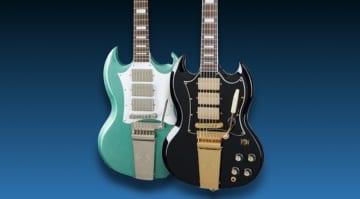
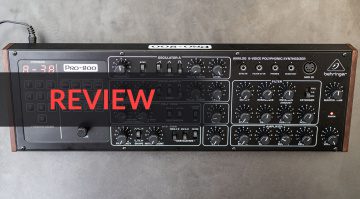
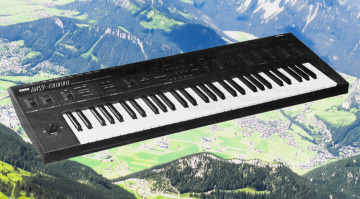
not strictly a poly (it is actually paraphonic), and one of the worse sounding synth of the era….
How can you do an article about the Poly-800 and not mention the Hawk Mods?
Why phrase this extra information as a ‘gotcha’ instead of just mentioning it?
agree, the hawkmod and especially the one he is designing as we speak will bring the engine into the 21st century.
I’ve owned a lot of synths in my lifetime and didn’t think much of the poly800 back in the days I bought it. So I sold it quite quickly once I could afford real polyphonic synths, with ‘real’ oscillators… Little did I know that very specific (not bread and butter capable) sound was almost not reproducible with any other device. so 40 years later I bought one second hand, to bring back that sound that got stuck in my mind.
I miss my Poly-800. It’s in storage, along with a Poly-61 and a Maxi Korg (my first synth). One day, maybe I’ll have the time and space to get them back up and running. I used to use the 800 to drive a QY-10, for realistic instrument sounds. But what I miss most is the 6 stage ADBSSR. Now I carry a Triton for organ and synth, or an SP for piano. I don’t take the Kronos out of the house.
Chip Oki MSM5232 was not used as filter, as stated… Filter was Korg`s NJM 2069, the same as in DW-8000 , DSS-1 for example…
The Fury 800 soft synth does a great job of emulating it… plus there’s a true. Polyphonic mode should y wish to overcome that limitation.
That’s the very first, and maybe the very last time that a synth review will name check Death In June, which you should all listen to Bring In The Night, if you don’t wanna sleep soundly ever again. Last we heard, part of the band still recording, in Australia. Skinny Puppy weren’t cheery souls at their peak either, if memory serves 😎
You are currently viewing a placeholder content from Facebook. To access the actual content, click the button below. Please note that doing so will share data with third-party providers.
More InformationYou are currently viewing a placeholder content from Instagram. To access the actual content, click the button below. Please note that doing so will share data with third-party providers.
More InformationYou are currently viewing a placeholder content from X. To access the actual content, click the button below. Please note that doing so will share data with third-party providers.
More Information